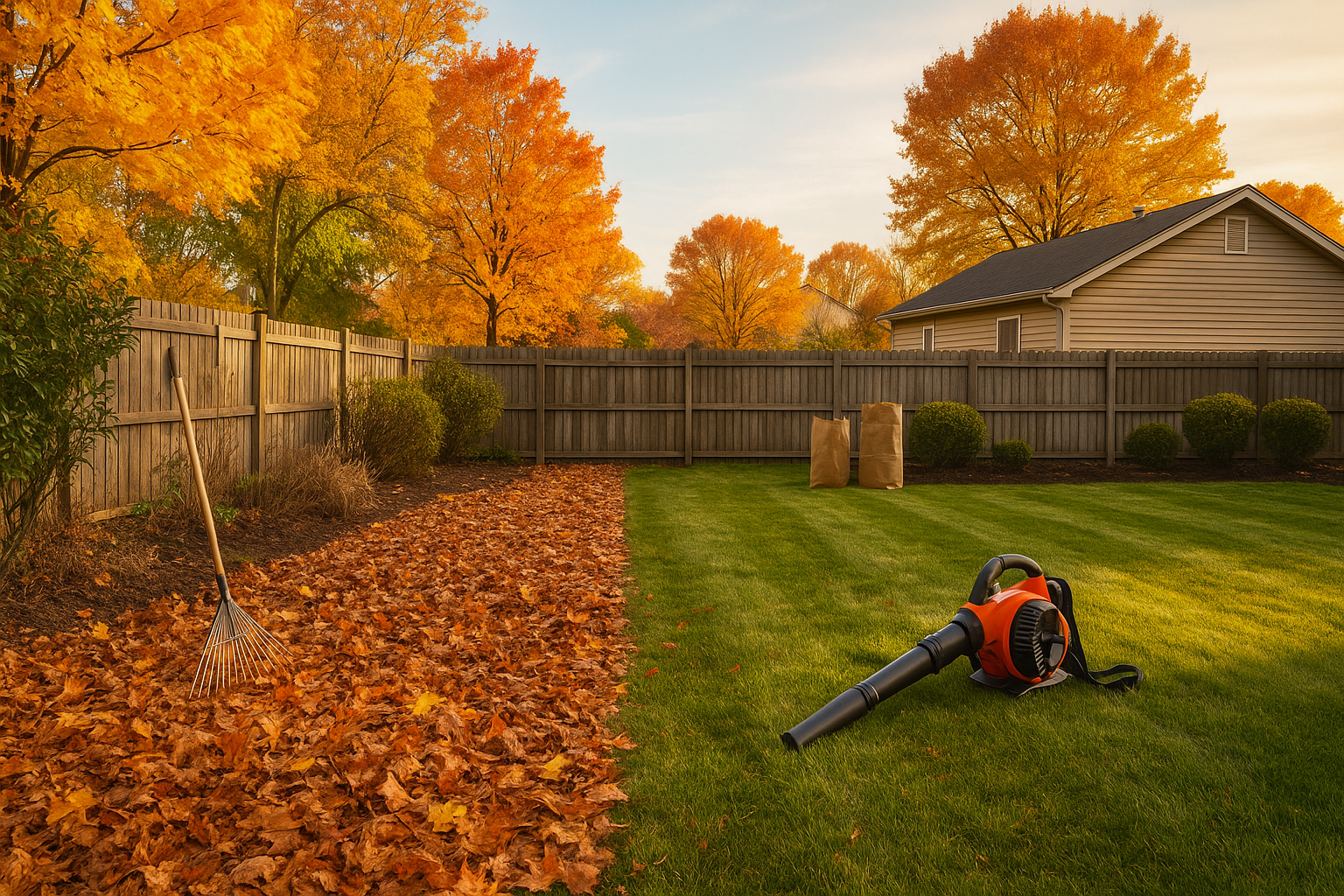Fall Yard Clean Up Guide for Homeowners
Don’t Let Fall Leaves Wreck Your Yard This Winter
If you live in Lindenhurst, Grandwood Park, or anywhere in Lake County, IL, you know the drill—autumn leaves start dropping fast, and before you know it, your yard looks like a crunchy mess. But skipping fall clean-up isn't just lazy—it can seriously damage your lawn, clog your gutters, and welcome unwanted pests.
Here’s your step-by-step DIY fall yard clean-up guide straight from a local pro (me, Gerry from Evo Lawn & Landscape). Let’s keep your lawn healthy, clean, and prepped for winter—without calling in a crew.
Step 1: Rake or Blow All the Leaves
Leaves left sitting on your lawn block sunlight and trap moisture. That’s a perfect recipe for mold, lawn suffocation, and dead grass by spring. If you want to know why that matters long-term, check out The Dangers of Letting Leaves Pile Up on Your Lawn.
Tools You’ll Need:
Rake or leaf blower
Tarp (to drag leaves)
Paper lawn bags or compost bin
Pro Tip:
Start at the edges and work toward the center. Use a blower if you have a large yard, but a rake does the job just fine for smaller suburban lots in Venetian Village and Third Lake.
Step 2: Cut the Grass One Last Time
Once leaves are cleared, give your lawn a final mow before the first frost. It’s part of what a professional fall clean-up includes, and it’s a critical step to avoid snow mold.
Ideal Height:
2.5”–3” for cool-season grasses common in Northern Illinois
Wondering What This Would Cost a Pro to Do?
Even if you're doing it yourself, it’s smart to know what a professional fall clean-up might cost—especially if you’re thinking about outsourcing next year. Here’s our breakdown of fall leaf removal costs in Lake County, IL to give you a clear picture.
Step 3: Trim Your Shrubs and Perennials
Now’s the time to cut back any dead growth so your plants can rest and regrow better in spring.
What to Trim:
Perennials (hostas, daylilies, black-eyed susans)
Ornamental grasses
Dead branches or overgrown shrubs
🧤 Wear gloves. Some plants (like sumac or burning bush) can irritate your skin.
Step 4: Clean Out Landscape Beds
You’re not done until the garden beds are clear. Leaves, twigs, and pine needles build up fast around flower beds, and that’s where mold and insects love to hide over winter.
Steps:
Rake or blow out leaves from mulch beds.
Pull up any weeds or dead annuals.
Edge the borders if needed (optional but great for curb appeal).
Add a thin fresh layer of mulch (optional).
Step 5: Turn Off Sprinklers & Prep Gutters
If you have irrigation, winterize it to avoid burst pipes. And gutters? They catch a ton of leaf debris.
DIY Gutter Tip:
Use a ladder + gloves or a gutter scoop to clear out packed leaves. Clogged gutters = ice dams = $$$ roof damage.
Local Yard Tips from a Pro
Living in Lake County, IL means cold winters and leaf-heavy falls. Here's how it varies by town:
Lindenhurst: Watch for maple leaves—they mat down fast and cause mold.
Grandwood Park: Lots of shade means more moisture = more fungus risk.
Venetian Village: Compact yards—be strategic and use a tarp to drag piles.
Third Lake: Trees + lake wind = constant falling leaves. Clean often.
Lake Villa: Many large lots = divide your clean-up into zones to avoid burnout.
Don’t Skip These Final Fall Clean-Up To-Dos
✅ Rake or blow every 7–10 days until trees are bare
✅ Bag or compost leaves—don’t just leave them by the curb
✅ Mow once more before snow
✅ Trim dead perennials and bushes
✅ Clean gutters
✅ Shut off irrigation and store tools
Final Thoughts: Want a Pro to Handle It?
If DIY isn’t your style—or you just don’t want to spend your Saturdays raking—hire the pros. At Evo Lawn & Landscape, we offer full-service fall clean-up in Lake County, IL, from Lindenhurst to Lake Villa and everywhere in between. Call/text (224) 777-0061 or request service online here »
FAQs – Fall Clean-Up in Lake County, IL
How often should I rake leaves during fall?
Every 7–10 days or after major leaf drops. Leaving leaves too long can cause lawn damage.
What happens if I skip fall clean-up?
You risk mold growth, dead patches, pest infestations, and compacted soil. Learn more in our article: The Dangers of Letting Leaves Pile Up
Can I mulch my leaves instead of bagging them?
Yes—if they’re dry and chopped finely with a mower. But too many leaves can still smother the lawn.
When is the best time to do a fall clean-up in Illinois?
Between late October and mid-November before the first snow or hard freeze.



